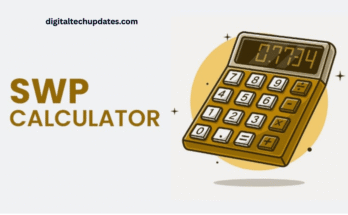Do you want to learn how to create business models with a simple and widely used system?Is the business plan too rigid a tool for you? The Business Model Canvas is what you were waiting for.
Before we start writing a splendid business plan we have to be clear about our business model.There are people who, even once they have finished the business plan, will not be able to explain in a few words what their business idea consists of.
There are many ways to create a business model, all of which must answer common questions such as what we do, how we do it and who we are targeting. But the way of working these questions is different in each case.
The book Business Model Generation by Alexander Osterwalder and Yves Pigneur led to the standardization of the creation of business models thanks to theBusiness Model Canvasand all the methodology on which it is based.
Business Model Canvas, a canvas on which to capture your business idea.
The book definesa business model as a description of how an organization creates, delivers and captures value, an excellent definition.
The Business Model Canvas is an essential tool for creating business models, describing different aspects of your business idea that are necessary for the proper functioning of your project.
Whether you want to set up an online store or sell services, you need to start with your business model.
The tool is nothing more than a canvas with different interrelated sections that cover all the basic aspects of a business: customer segments, value proposition, channels, customer relations, sources of income, key resources, key activities, partners. key and cost structure.
There is also a similar and very interesting tool called Lean Canvas .
Design your business model with Business Model Canvas
1. Choose the Customer Segments
Customer segments represent the well-known market segmentation, that is, to which groups of people we want to offer our service or product. To segment the market we can group by different needs to satisfy, different channels through which to reach, different types of relationships or different types of offer.
Some examples of customer segments are:
- Mass Market– The business targets as wide a market as possible with similar needs and problems.
- Niches– Highly specialized market segments that cater to very specific requirements.
- Segmented: market segments with little differentiated needs, that is, different segments but with similar needs, although with slight variations.
- Diversified: segments that are very different from each other, with unique needs and problems.
- Multi-segments: segments that depend on several segments at the same time. A good example would be that of advertising which, on the one hand, requires companies to hire advertising space and, at the same time, it is necessary for advertising to reach users.
2. Define your value proposition
The value proposition describes the set of features and benefits that create value to a specific segment. Explain the service or product we offer to our customers. It is one of the keys of the Business Model Canvas that is not taken into account, for example, in business plans.
The characteristics of the value proposition can be based on a series of criteria:
- Novelty: we cover a need or problem for which a specific product or service did not yet exist.
- Performance: performance improvement over the current offer: better quality, more speed…
- Personalization: we offer individually adapted products or services or even co-created by the same user.
- Design: we offer a more careful or innovative design compared to the existing offer. A typical case would be Apple.
- Price: we can offer low cost solutions.
3. Choose the Channels
To communicate, and reach and deliver our value proposition to our audience, we can use a variety of different channels.
The channels can be their own or from partners and in turn direct or indirect. The channels focus their activity on 5 phases:
- Notoriety: how do we make people know us .
- Evaluation– How we help our clients evaluate our value proposition.
- Purchase– How we enable customers to purchase our service or products.
- Delivery– How we deliver the value proposition to our customers.
- After- sales: How we provide after-sales services to customers.
4. Establish the relationship with the client
There are different types of relationships that we can establish with specific customer segments. Some examples are:
- Personal assistance: evidently based on interaction between people, the client with a company representative.
- Self-service: there is no direct relationship with the client, but we offer all the necessary means so that the client can solve the problems by themselves.
- Automated services: it is a mix between a self-service relationship with automated processes.
5. Determine the sources of income
Revenue streams represent how the business generates revenue for each customer. Earning revenue can be a one-time payment or a recurring payment. The generation of this income can be of different types:
- Sale: It is the most typical of the sources of income. The company sells a product to a customer for which it will receive a one-time payment.
- Payment for use: you pay for the use made of the service, the greater the use, the greater the payment.
- Subscription– recurring payment for using a service.
6. Find out the Key Resources
This block describes the most important resources we need to make our business model work. These resources can be categorized according to the following criteria:
- Physical: machinery, vehicles, buildings…
- Intellectual: trademarks, patents, copyrights…
- Human: depending on the business model, key human resources may be required in a given area.
- Financial: cash, lines of credit, stock options…
7. Set the Key Activities
In every company there are some processes that will be the most important for the performance of its activity. These activities can be categorized according to the following criteria:
- Production: design, development or delivery of a product for example.
- Troubleshooting: for companies that require solutions to individual customer problems.
- Platform: if the model has a platform as a key resource, it will need a series of key activities for its development or management.
8. Choose the key Partners
This block describes the network of suppliers and partners necessary for the business model to work. There are 3 factors that lead us to look for partners:
- Optimization and economies of scale: companies cannot provide everything internally, so it is necessary to have suppliers to reduce costs.
- Risk reduction: strategic alliances may be necessary to reduce uncertainty.
- Acquisition of resources or activities: companies do not usually have all the necessary resources nor can they carry out all the activities internally.
9. Break down the Cost Structure
The cost structure describes all the costs that are incurred in operating the business model. Costs can be guided by different factors:
- Cost: minimization of costs as much as possible.
- Value– Premium value propositions that focus on generating the most possible value for the customer.
- Fixedcosts: costs independent of the volume of business.
- Variablecosts: costs proportional to the volume of business.
- Economies of scale: exponential growth in revenues, reducing the cost per product at higher volumes.
Conclusions
As we have seen throughout the article,the Business Model Canvas is a very powerful tool that allows us to break down the business model we want block by block. In the Business Model Generation book, in addition to further developing the information in these sections, it offers a series of patterns, design ideas, prototyping … that allow a greater in-depth study of the subject, which is why we totally recommend it.
Once we have been able to complete the canvas, we will have a much clearer idea of our business idea and we will be able to explain it more easily to clients, partners and investors. This is the first step in creating a new project, which we can complete by translating everything we have learned into a business plan based on a more solid business model.




